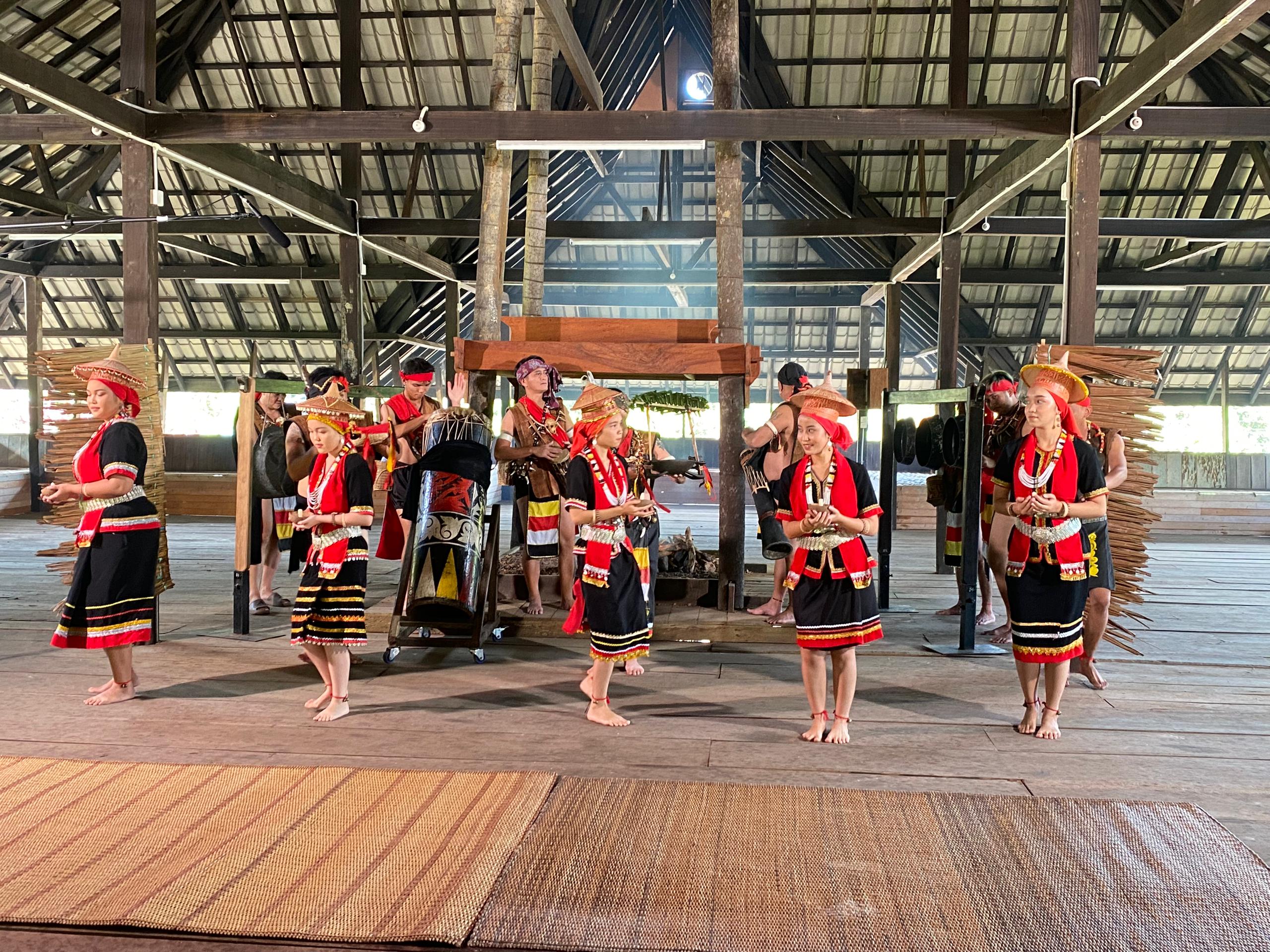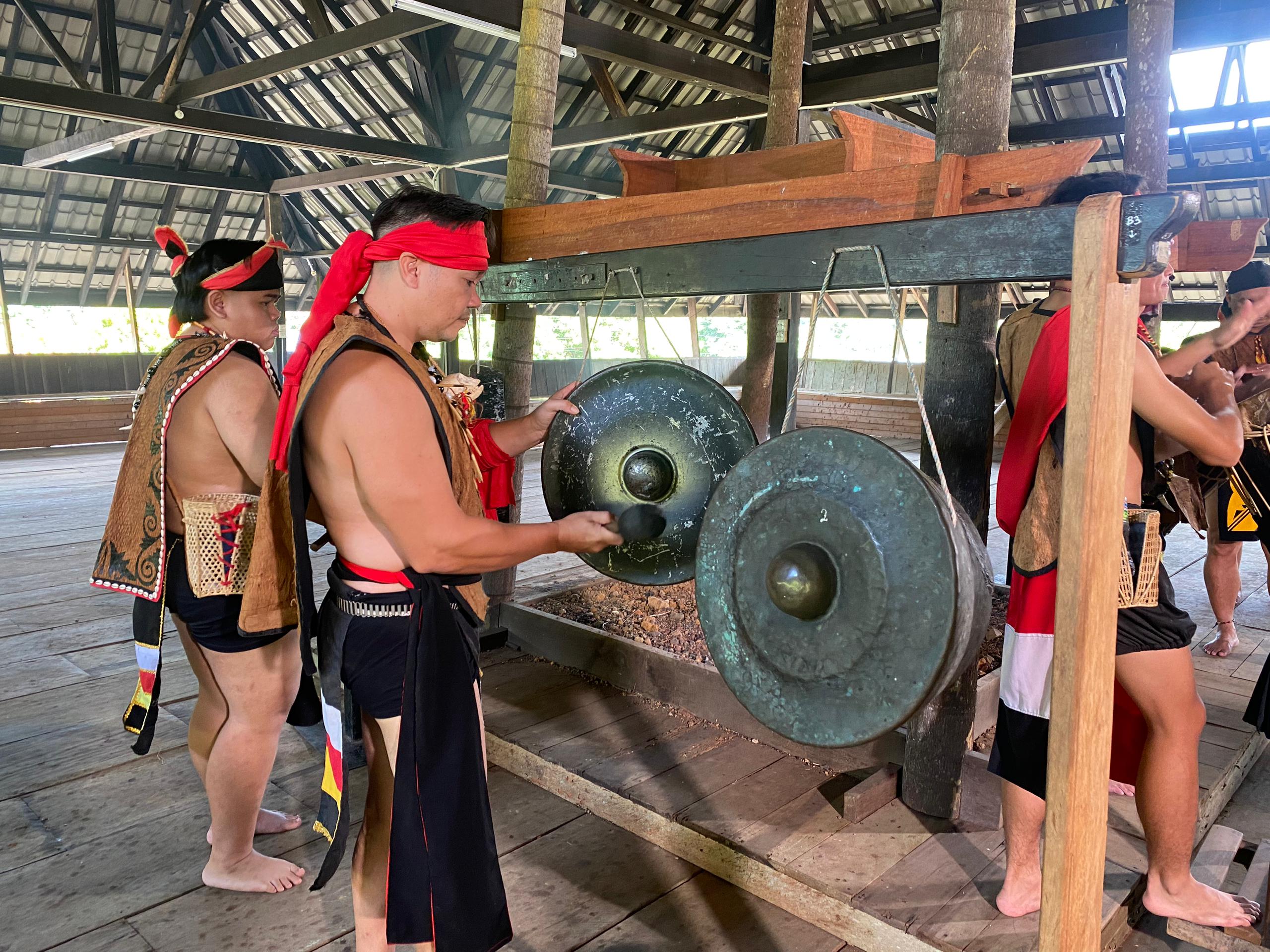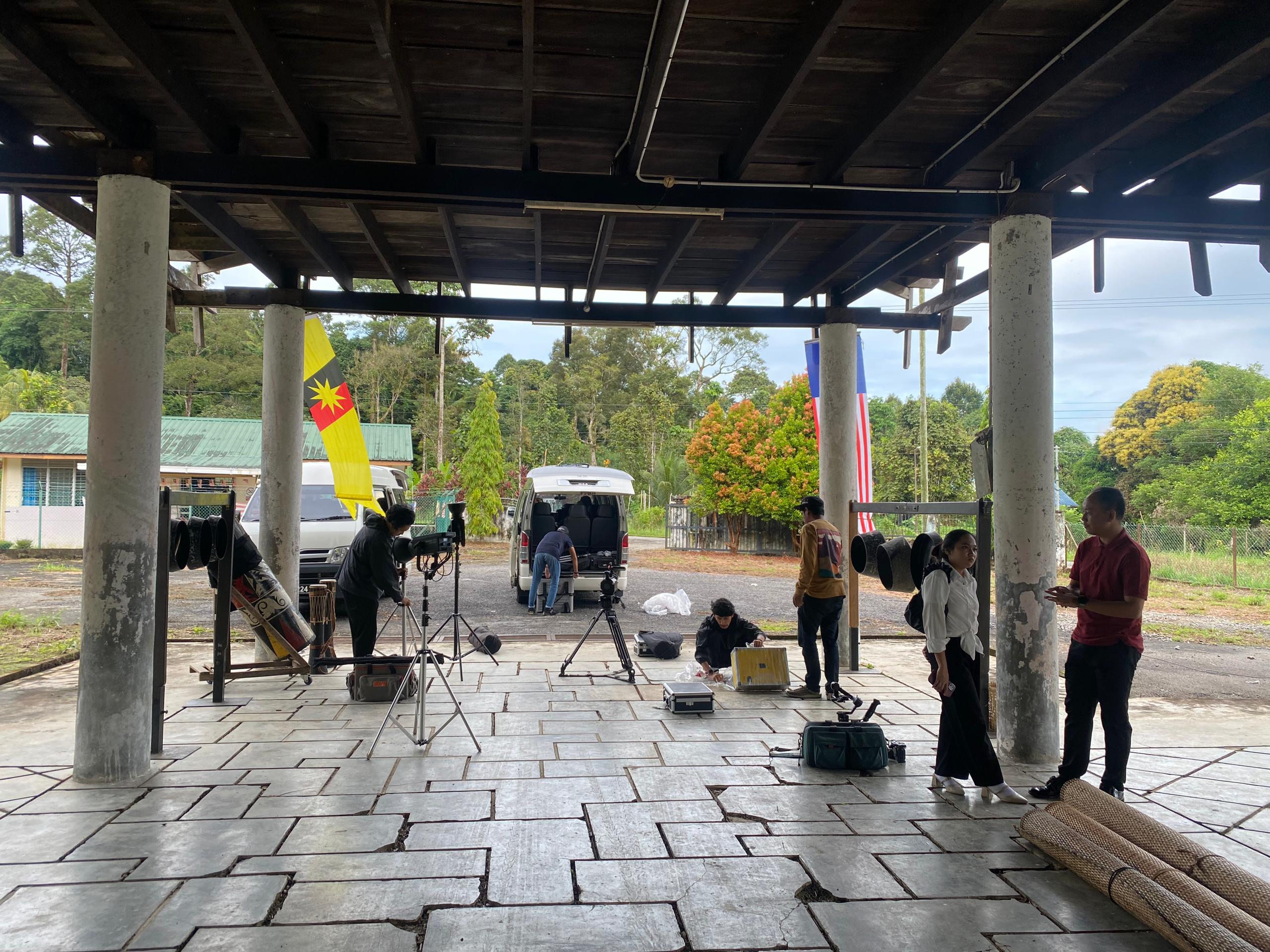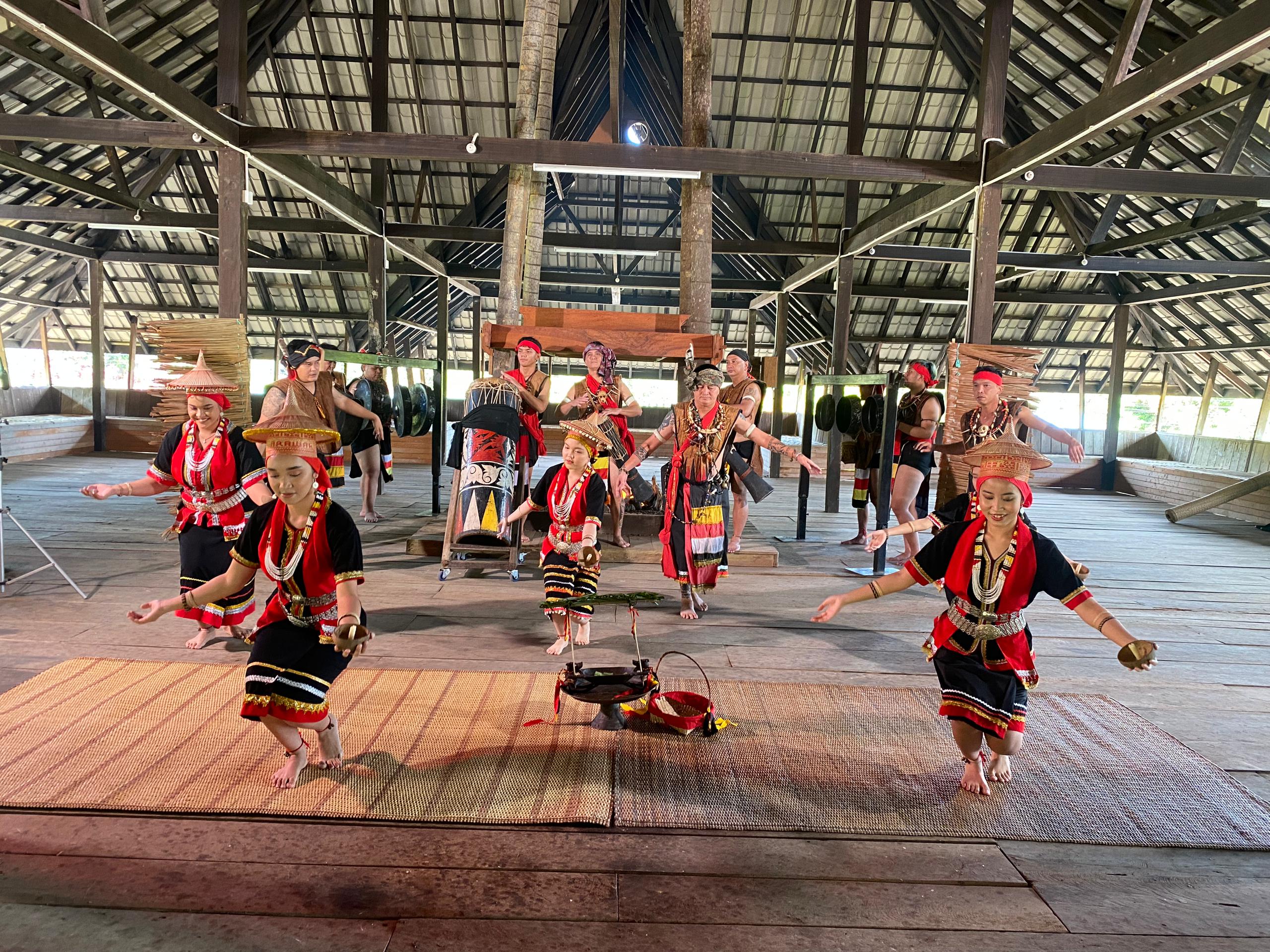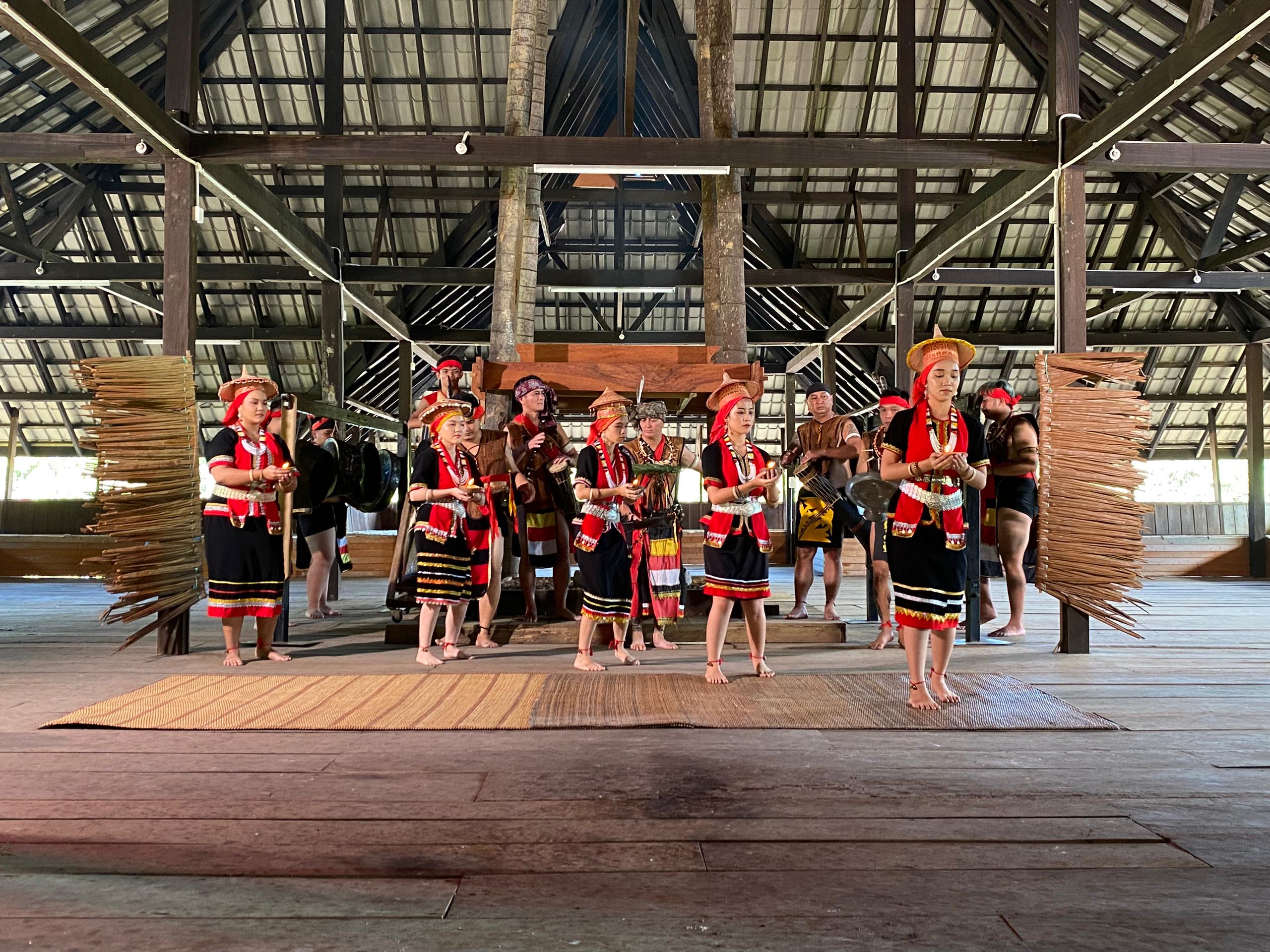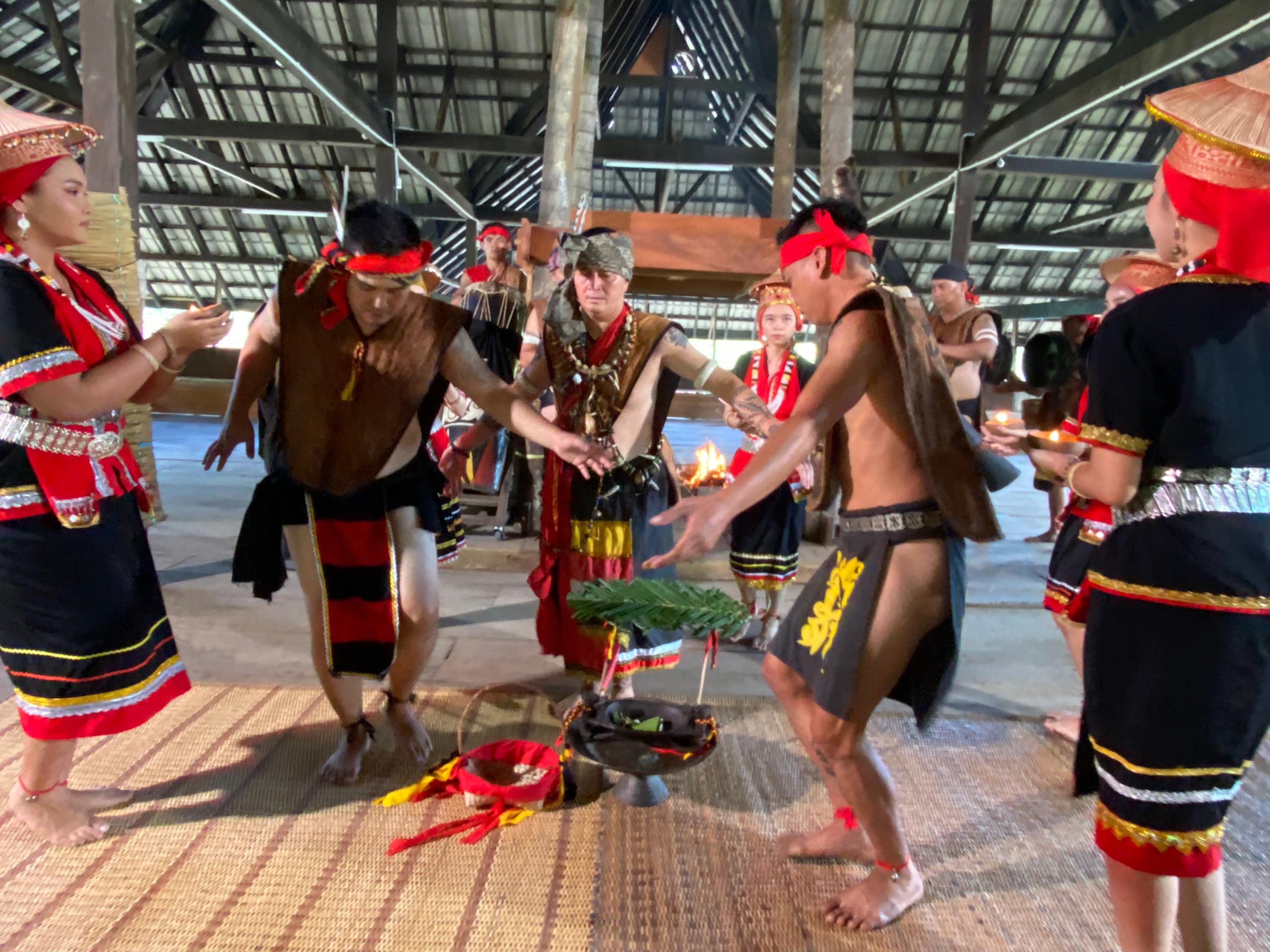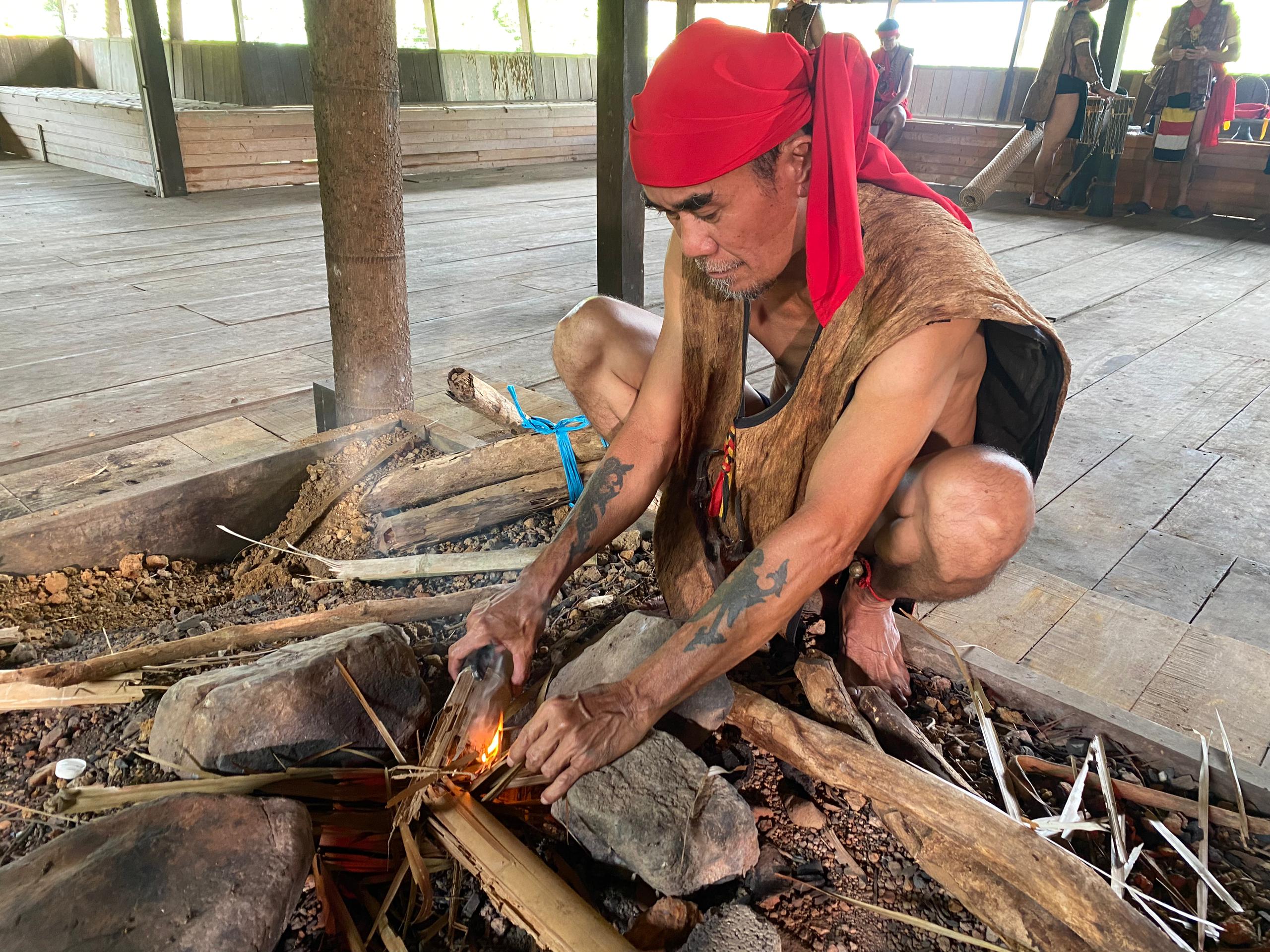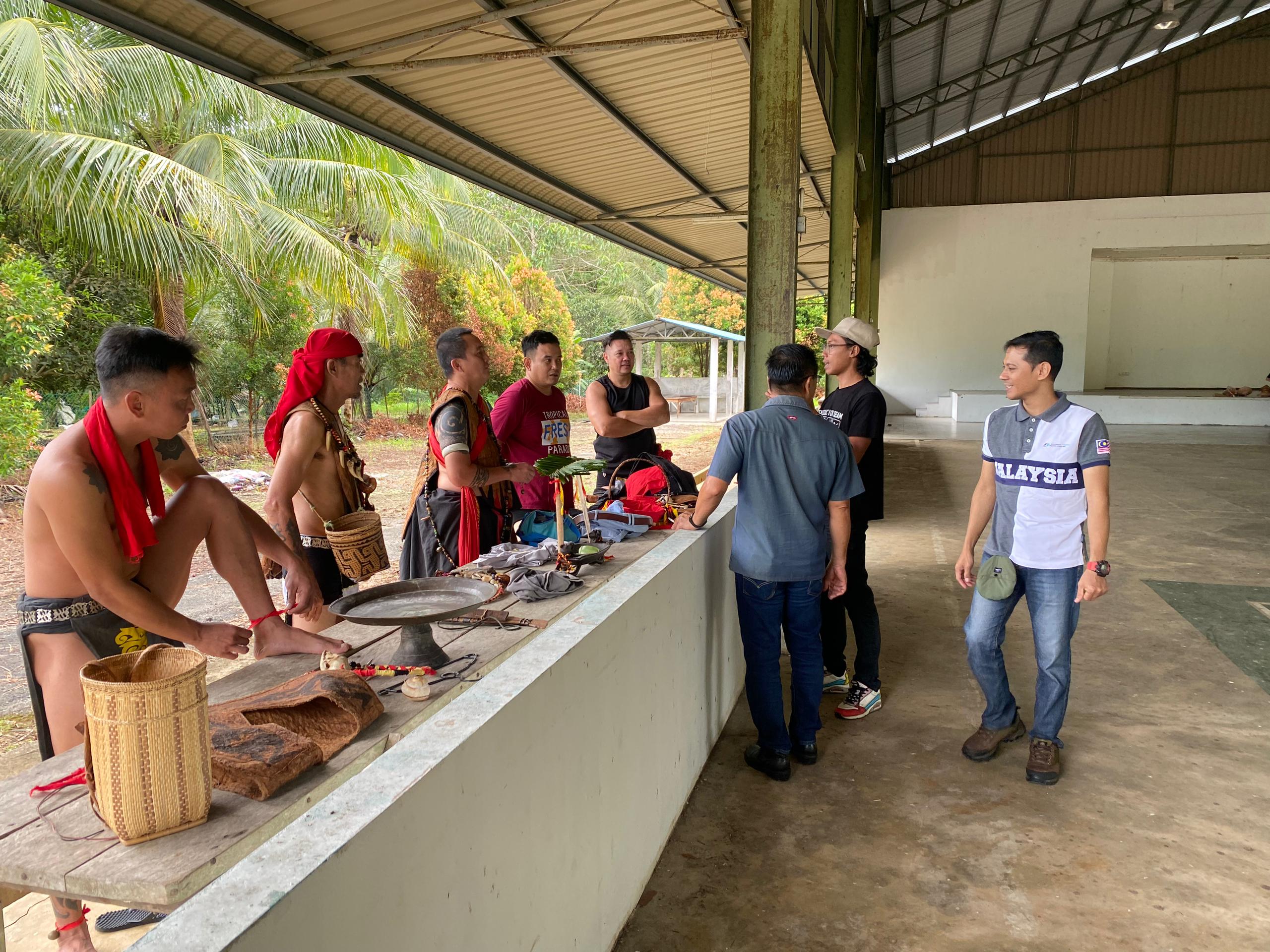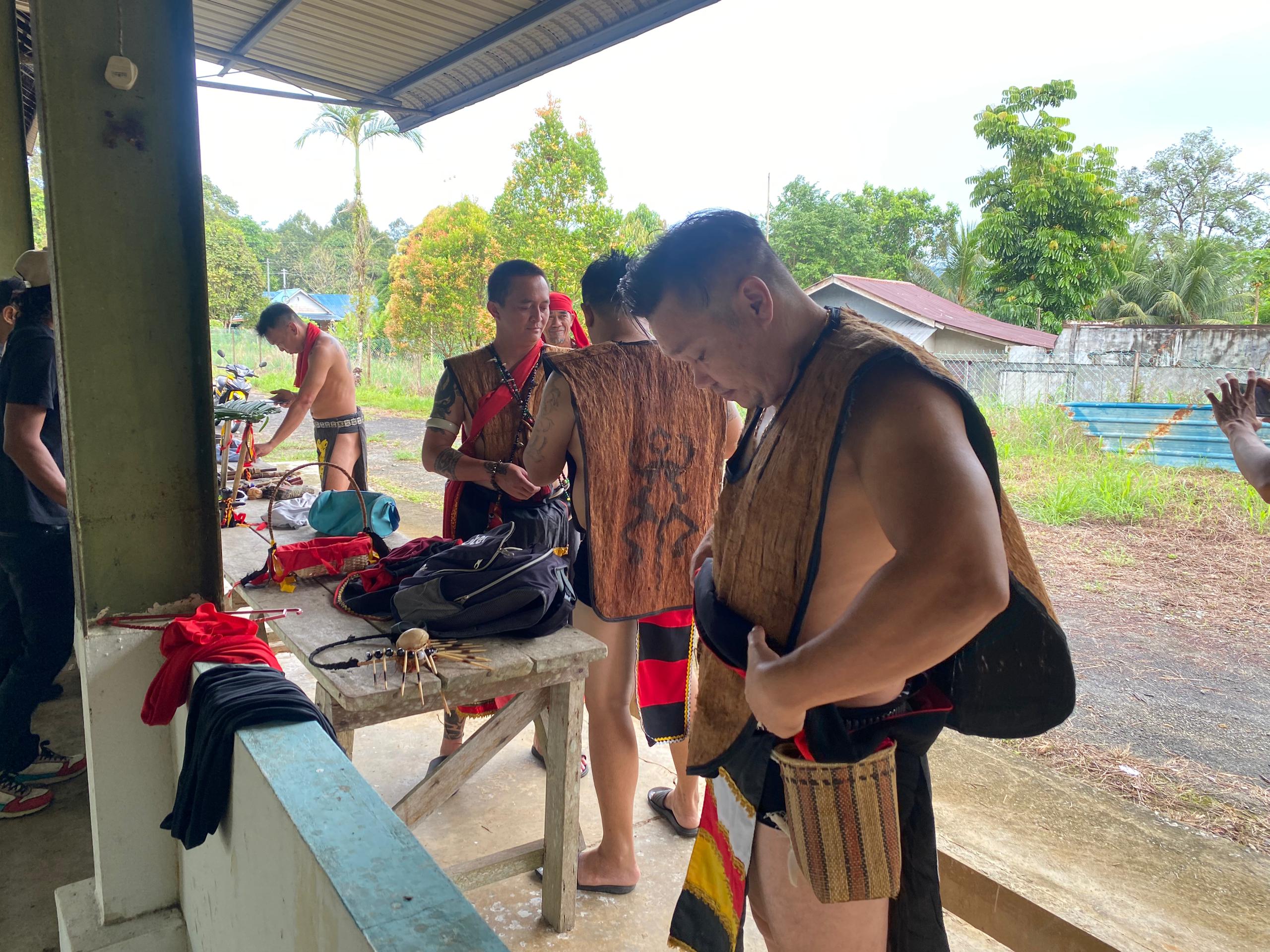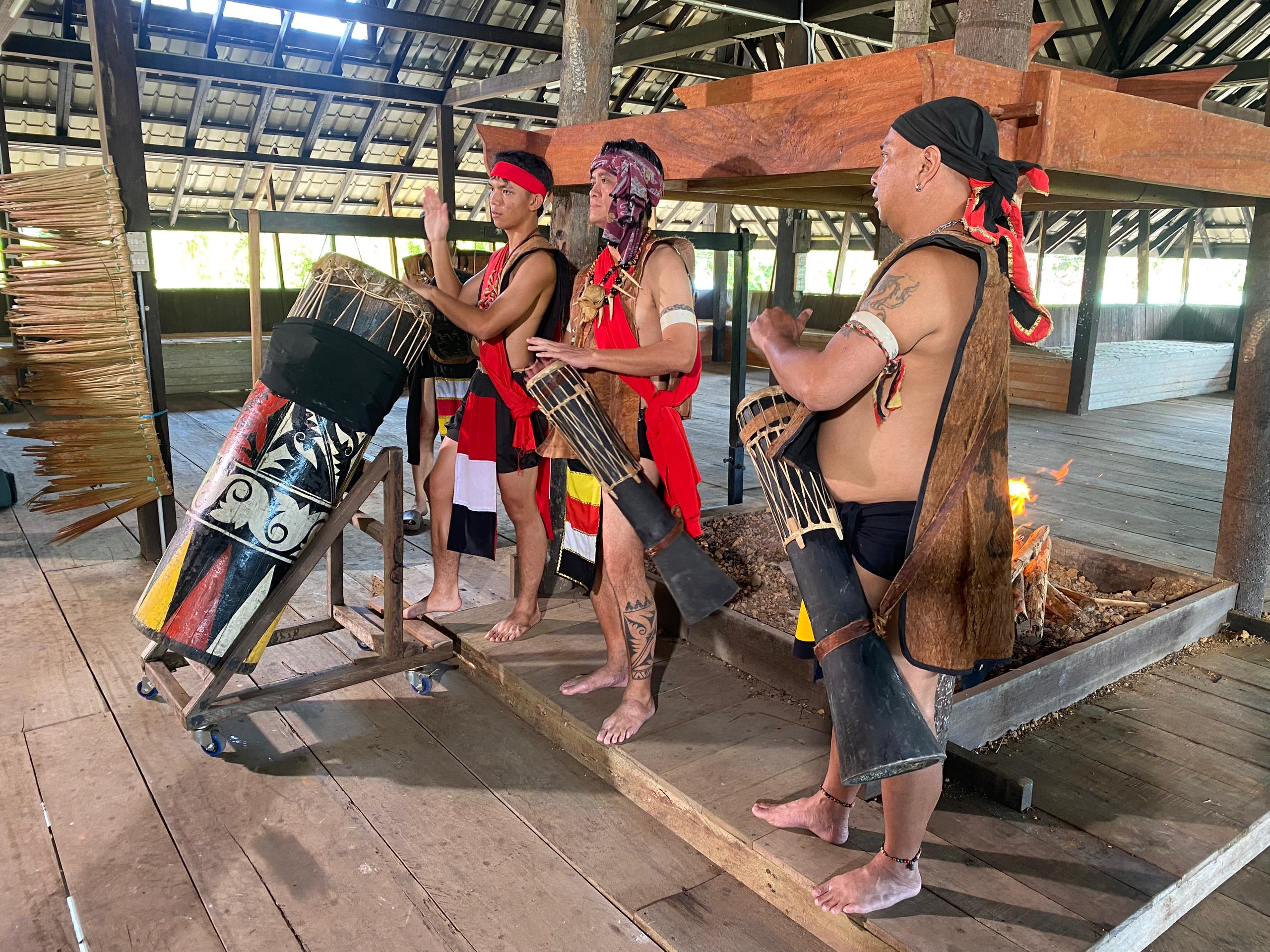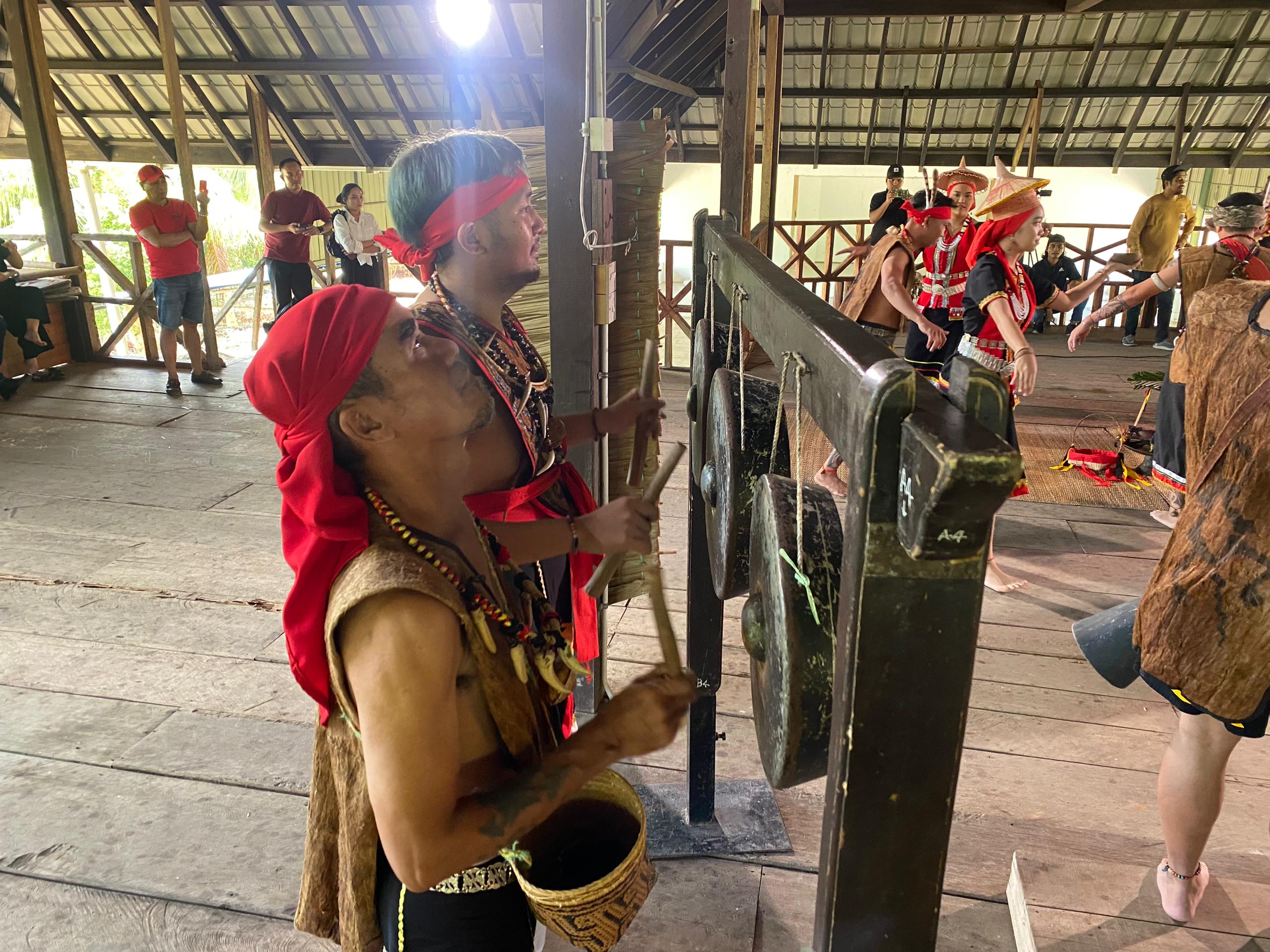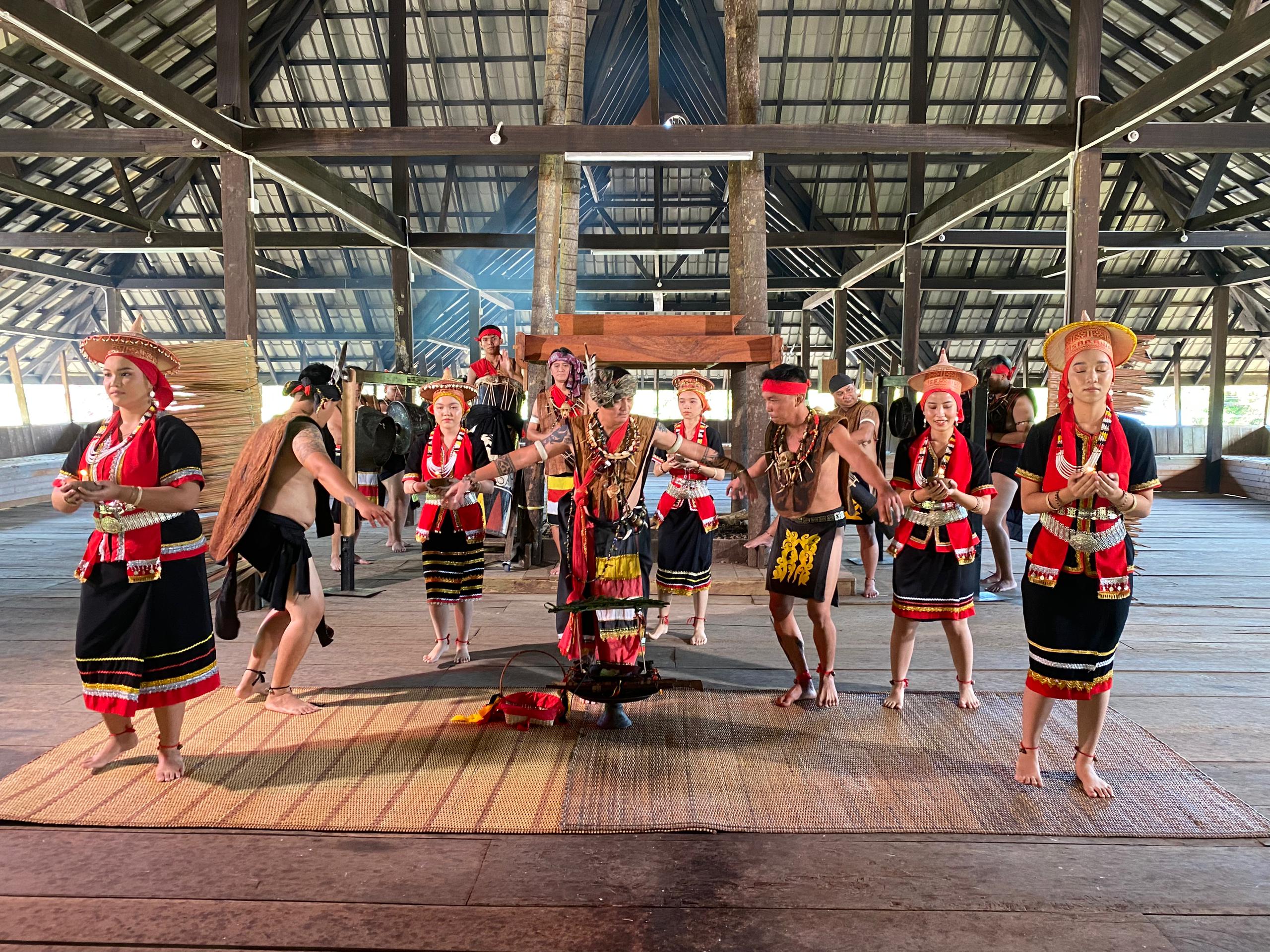ARTS AND CULTURE INFORMATION GATEWAY
Immerse yourself in the colorful world of art and culture! From traditional heritage to contemporary works, discover uniqueness that reflects the nation's identity and identity
Tarian Sigar Tolak Bala
Picture
13
Video
Available
Today's Visitor
9
Number of Visitors
1062
Introduction and history
The Sigar Tulak Bala dance is one of the significant cultural heritages among the Bidayuh ethnic community in Sarawak. This dance is usually performed after the harvesting season as part of religious and traditional rituals aimed at expelling disease-bearing spirits believed to have visited the village. According to Bidayuh beliefs, the appearance of supernatural beings known as Mindo Ngolah, along with manifestations of spirits, may bring illness, misfortune, and disaster to the community if not addressed through specific rituals.
Traditionally, the dance serves as a form of spiritual intervention within the Bidayuh belief system to restore personal well-being, environmental harmony, and communal balance. Its primary function is as a ritual medium to expel disease-bearing spirits believed to be the cause of outbreaks and disasters in the village. Through the performance of this dance, these spirits are appeased and guided back to their original habitat in the sea, following Mindo Ngolah, so they no longer disrupt the well-being of the villagers. Additionally, the dance functions to ward off spiritual disturbances and agricultural pests that threaten rice cultivation. The ritual is believed to have the power to avert calamities such as plant diseases and pest invasions that may compromise agricultural yields. Therefore, the ritual is often conducted in paddy fields as a form of spiritual protection for the crops.
Beyond its function within traditional belief systems, the Sigar Tulak Bala dance has undergone functional transformation in line with the evolving socio-cultural landscape of the Bidayuh community. Today, the dance has developed into a vital element that collectively shapes the cultural identity of the Bidayuh people. It is no longer limited solely to ritual ceremonies but is also performed as a cultural heritage showcase at various festive occasions such as wedding celebrations, welcoming ceremonies for dignitaries, and cultural performances at community, state, and national levels. Through this process of adaptation, the Sigar Tulak Bala dance remains highly relevant in contemporary society, playing an active role in strengthening Bidayuh cultural heritage values and contributing to the rich diversity of ethnic performing arts in Sarawak.
The costumes used in this performance reflect the traditional attire of the Bidayuh community, with black serving as the dominant base color. For male dancers, the ensemble begins with the Bajuh Tutuh, a garment made from tree bark worn on the upper body. Around the waist, the dancers wear the Tahup (Tawoup), a long piece of fabric wrapped around the body, with both ends left to hang at the front and back. To enhance the appearance, the costume is layered with a Rompi (vest) worn as an outer garment. The male dancers' attire is further complemented with various traditional accessories, including the Burang Sumba, a traditional headgear or headdress; Pagiah Nubout and Pimulang, which serve as ornamental adornments; and Kima, bracelets crafted from metal.
For female dancers, the base attire consists of a short black Baju Jipo, paired with a Jamuh/Jomuh, a black satin skirt worn as the lower garment. The upper part of the costume is further embellished with the Silampai, a red sash draped diagonally across both shoulders. The appearance of the female dancers is also adorned with metallic ornaments, particularly silver coins that serve as the primary decorative element. The head is crowned with the Sipiah, a cap-like headpiece featuring red, black, and white colors with a long fabric tail cascading down the back. Additionally, the dancers wear various accessories, such as the Kungkung Tumih, a colorful beaded necklace; Seset Tapeh and Gimak, silver belts with large ornamental centers; and Porik, a belt made of copper or other metals worn around the waist. For the hands and feet, the dancers wear Galang Tangan Tumih/Uwi, bracelets made of beads or rattan, and Galang Kajak Girunung, colorful beaded anklets that complete the overall aesthetic of the Sigar Tulak Bala dance costume.
In the performance of the Sigar Tulak Bala dance, only three types of traditional musical instruments are used: the Agukng, Gulintangan, and Gadobong. The following is a description of each instrument:
Agukng (Gong)
The Agukng (gong) serves as the primary musical instrument, producing deep, resonant, and vibrating tones. It provides the fundamental rhythm for the entire performance. Typically, two Agukng are used, one being larger and the other smaller in size to create variation in sound.
Gulintangan or Gulentang
The Gulintangan or Gulentang is a xylophone-like instrument resembling the Saron, but it is made of rectangular wooden bars. Each wooden bar varies in length and pitch, producing different tones for each key. Generally, two musicians are required to play this instrument simultaneously, allowing for melodic layering during the performance.
Gadobong (Drum)
The Gadobong, or drum, produces rhythm through percussive beats. It is made from hollowed-out wood, commonly from jackfruit trees (Artocarpus heterophyllus), with the center carved out to form a resonant chamber. The Gadobong used in the Sigar Tulak Bala performance is usually smaller than standard drums, producing sounds that complement the dance's rhythm and movement.
In the performance of the Sigar Tulak Bala ritual dance, the arrangement of movements is rich in symbolic elements, functioning as a medium of spiritual communication. The performance begins with the female dancers moving in unison while carrying candles made from panyut coconut oil, placed inside coconut shells. Meanwhile, the male dancers each carry ritual objects such as the Taya (woven bamboo basket), Ajung (miniature boat), and young coconuts, which serve as offerings to the spirits. Inside the Ajung, a variety of food offerings known as Sadis in the Bidayuh language are placed, which act as sacrificial offerings to appease the spirits.
The dance movements emphasize alternating foot stomps between the left and right feet, synchronized with the rhythm of the gong. In addition, the female dancers extend their arms forward in a motion resembling the action of winnowing rice. The male dancers, on the other hand, perform wider arm extensions, imitating the outspread wings of a bird. Both male and female dancers also execute hand-opening movements while seated or turning in place together with their partners. Overall, the repetitive movements are structured and performed according to the artistic preferences and creativity of the choreographer.
Mr. Charmmy Ladong. Girumpung Baatan Asal Kampung Ta-ee(GBAT). Kampung Taee, Serian, Sarawak.
Mr. Andrisse Ridu. Girumpung Baatan Asal Kampung Ta-ee(GBAT). Kampung Taee, Serian, Sarawak.
Reference Source
Bahan Bacaan
Anak Jelly, R. F., & Dawam, Z. A. M. (2019). Analisis gerak dan peranan wanita dalam ritual Boris, etnik Bidayuh: Movement analysis and the role of Bidayuh women in the Boris ritual. Jurnal Gendang Alam (GA), 9.
Chelum, A., Magiman, M. M., Tugau, M., Saufi, M., Bokhari, S., & Salleh, N. (2021). The Nyangahant ritual in the culture of Salako community at Kampung Pueh Lundu, Sarawak. Turkish Online Journal of Qualitative Inquiry, 12(7).
Dewan Bahasa dan Pustaka. (n.d.). Pusat Rujukan Persuratan Melayu. Diakses daripada https://prpm.dbp.gov.my/
DBNA. (2014, Mei). The Bidayuh costume. Diakses daripada https://dbna.org.my/blog/the-bidayuh-costume/
Hersy Noveelia anak Henry. (2014). Pengurusan pakaian tradisional kaum Bidayuh di Daerah Bau. Diakses daripada https://ir.unimas.my/id/eprint/18818/1/Pengurusan%20pakaian%20tradisional%20kaum%20Bidayuh%20(24pgs).pdf
Riponche, T. (2017, Mac). Pakaian tradisional Malaysia. Diakses daripada https://www.tsemrinpoche.com/tsem-tulku-rinpoche/malaysia/pakaian-tradisional-malaysia.html
Wong, M. (2012, September). Pakaian tradisional etnik Sarawak. Diakses daripada https://www.slideshare.net/cikgucikgucikgu/pakaian-tradisional-etnik-sarawak
Tokoh (jika ada temu bual tokoh) Encik Charmmy Ladong. Girumpung Baatan Asal Kampung Ta-ee(GBAT). Kampung Taee, Serian, Sarawak.
Encik Andrisse Ridu. Girumpung Baatan Asal Kampung Ta-ee(GBAT). Kampung Taee, Serian, Sarawak.
Location
State JKKN Contact Information
Encik Boniface Anak Babai
Cultural Officer
Jabatan Kebudayaan dan Kesenian Negara, Sarawak
Tingkat 5 Bangunan Sultan Iskandar,
Jalan Simpang Tiga,
93000, Kuching,
SARAWAK
019-2399682/082-422006

 Girumpung Baatan Asal Kampung Ta-ee (GBAT)
Girumpung Baatan Asal Kampung Ta-ee (GBAT)